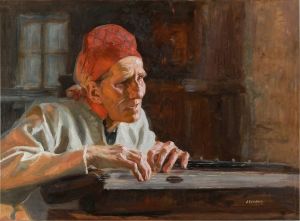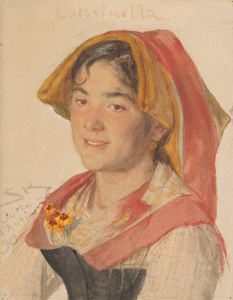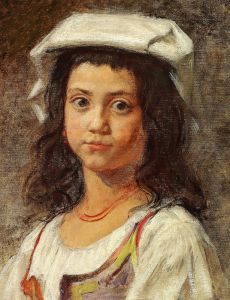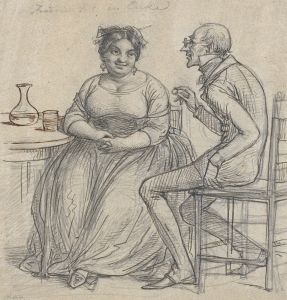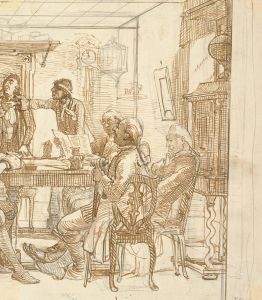
Studie af dansende italienerinde
A hand-painted replica of Wilhelm Marstrand’s masterpiece Studie af dansende italienerinde, meticulously crafted by professional artists to capture the true essence of the original. Each piece is created with museum-quality canvas and rare mineral pigments, carefully painted by experienced artists with delicate brushstrokes and rich, layered colors to perfectly recreate the texture of the original artwork. Unlike machine-printed reproductions, this hand-painted version brings the painting to life, infused with the artist’s emotions and skill in every stroke. Whether for personal collection or home decoration, it instantly elevates the artistic atmosphere of any space.
Wilhelm Marstrand was a prominent Danish painter in the 19th century, known for his lively and dynamic compositions. One of his notable works is "Studie af dansende italienerinde," which translates to "Study of a Dancing Italian Woman." This painting exemplifies Marstrand's interest in capturing movement and the human form, a recurring theme in his oeuvre.
Marstrand was born in Copenhagen in 1810 and studied at the Royal Danish Academy of Fine Arts. His artistic journey took him to Italy, a country that profoundly influenced his work. Italy's vibrant culture, landscapes, and people provided Marstrand with endless inspiration, and he often depicted scenes from Italian life in his paintings. "Studie af dansende italienerinde" is a product of this period, reflecting his fascination with Italian customs and the lively spirit of its people.
The painting itself is a study, suggesting that it was likely a preparatory work or an exploration of a particular subject or technique. Marstrand was known for his ability to convey movement and emotion, and this piece is no exception. The subject, a dancing Italian woman, is captured in mid-motion, her posture and expression conveying a sense of joy and vitality. Marstrand's use of light and shadow adds depth to the composition, highlighting the dancer's form and the fluidity of her movements.
Marstrand's technique in this study reflects his academic training and his exposure to various artistic styles during his travels. He was adept at combining elements of realism with a more romanticized view of his subjects, a balance that is evident in this work. The painting's composition and the attention to detail in the dancer's attire and surroundings suggest a deep appreciation for the cultural nuances of the scene he was depicting.
Throughout his career, Marstrand was celebrated for his genre paintings, portraits, and historical scenes. His works often depicted everyday life with a sense of narrative and character, making them relatable and engaging to viewers. "Studie af dansende italienerinde" fits within this context, offering a glimpse into the artist's ability to capture the essence of a moment and the spirit of his subjects.
Marstrand's influence extended beyond his paintings; he was also a respected teacher and served as a professor at the Royal Danish Academy of Fine Arts. His legacy is evident in the works of his students and the continued appreciation of his contributions to Danish art. "Studie af dansende italienerinde" remains a testament to his skill and his enduring fascination with the human experience, particularly as seen through the lens of different cultures.
In summary, "Studie af dansende italienerinde" by Wilhelm Marstrand is a reflection of the artist's interest in movement, culture, and the human form. It captures a moment of joy and vitality, characteristic of Marstrand's ability to convey emotion and narrative through his art. The painting is a valuable piece within Marstrand's body of work, illustrating his connection to Italy and his skill in bringing scenes of everyday life to the canvas.





